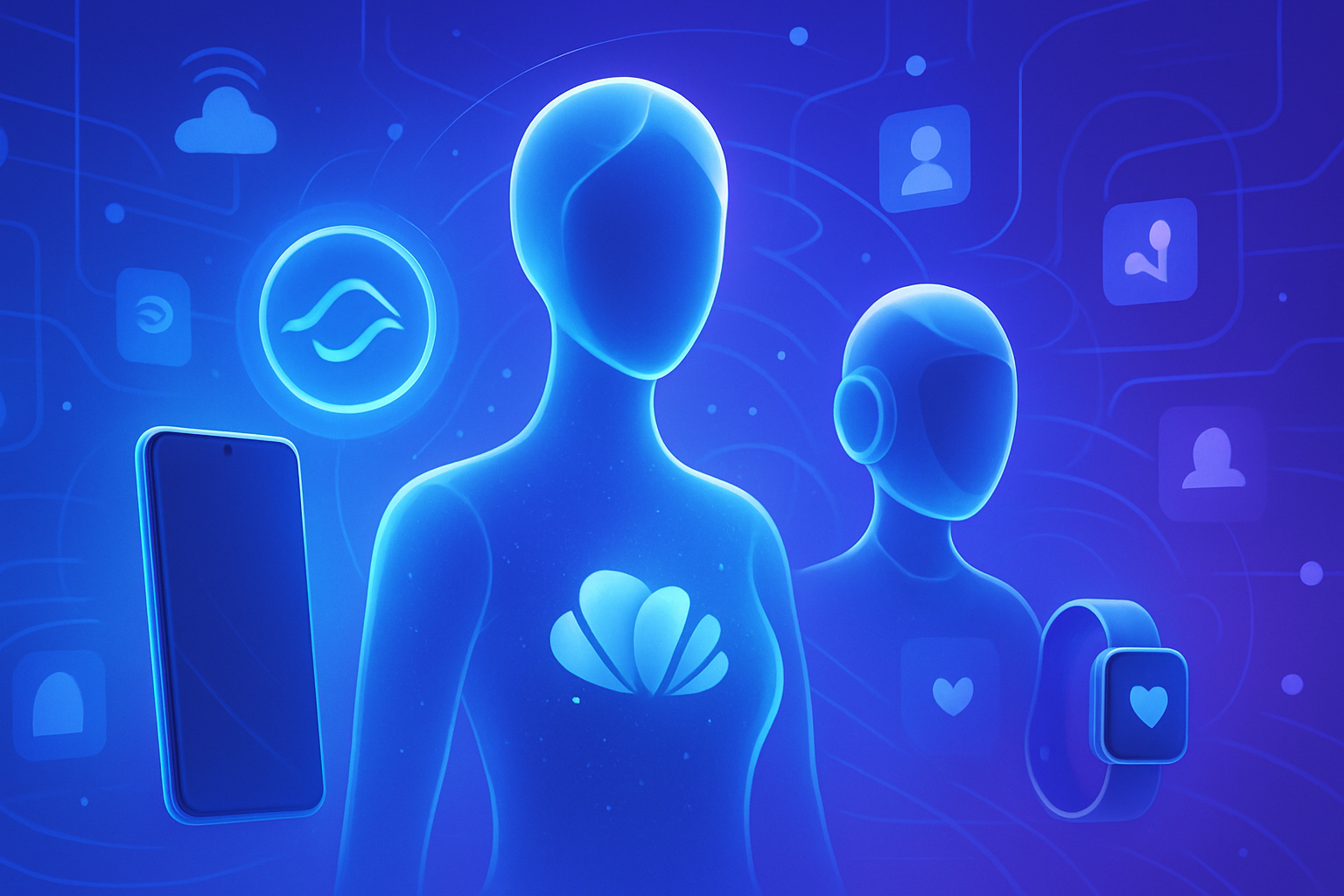Huawei’s innovations with *HarmonyOS 6* promise an unexpected revolution in the mobile operating system market. AI agents, integrated into this platform, transcend simple functionalities to become true intelligent intermediaries. This paradigm shift positions Huawei as a serious competitor to the dominant *Android* and *iOS*, offering an innovative alternative that awaits scrutiny.
The AI-first architecture redefines user interactions, fostering an intuitive and personalized experience. *Developers* will find in the Agent Framework an accessible environment to create high-performing automated programs. The transition to integrated intelligence underscores Huawei’s ambition to build a coherent ecosystem, aligning hardware and software in a unique synergy.
AI agents of HarmonyOS 6: a technological revolution
HarmonyOS 6 represents a significant advance in the mobile operating system field. The platform integrates AI agents that transcend simple functionality to establish a deeply user-centered interactive architecture. This change illustrates a broader trend where operating systems become intelligent intermediaries, capable of anticipating and acting on behalf of users.
The framework of AI agents
The heart of HarmonyOS 6 lies in its AI agent framework. This system allows developers to design automated programs without requiring complex learning models. This approach aims to make AI development more accessible within Huawei’s ecosystem. Richard Yu Chengdong, group president, announced the availability of over 50 AI agents from established platforms, thereby enhancing the ecosystem’s capabilities.
A strategic integration
The integrated AI agents of HarmonyOS 6 mark an evolution of operating systems as platforms dedicated to the deployment of AI, rather than just application launchers. By directly integrating these capabilities at the system level, Huawei positions its platform as the foundation for the next computing experiences. This meets a growing demand for smarter and more tailored interactions.
A booming adoption
Recent figures show that HarmonyOS has eight million registered developers and over 30,000 applications available. The system is now operational on more than 40 device models, illustrating a growing hardware adoption. This development continues even in the face of fierce competition with other systems, particularly iOS and Android.
A model focused on user needs
Richard Yu emphasized that the 5,000 most popular applications account for 99.9% of the time consumers spend on Huawei devices. This demonstrates a conscious strategy focused on the quality of applications rather than their quantity. The focus on essential applications reflects a mature approach allowing Huawei to compete with such well-established platforms.
Pangu: an AI for businesses
Huawei also unveiled Pangu 5.5, a new AI model aimed at industrial applications. This natural language processing model contains 718 billion parameters, while the computer vision model has 15 billion parameters. These specifications position the Pangu models effectively in the current AI landscape, targeting sectors such as medicine, finance, and automotive.
An expanding ecosystem
The company has recently extended HarmonyOS beyond smartphones with the launch of new laptops. This multi-device strategy aims to offer a unified software experience. Drawing inspiration from Apple’s ecosystem approach, Huawei is attempting to overcome various technical challenges related to hardware diversification.
Strategic development in the face of challenges
The latest developments in HarmonyOS reflect Huawei’s overall transformation from a hardware provider to a player in software and services. The company’s evolution stems from the restrictions imposed by the U.S. entity list, prompting it to adopt innovative methods to position itself in the market. This shift towards increasing reliance on AI and software services appears promising.
To learn more about technological advancements in AI, several events such as the AI & Big Data Expo, to be held in Amsterdam, California, and London, offer interesting insights.
Praying for a future where operating systems continuously evolve, Huawei seems well-positioned to lead this transformation within a rapidly changing technological environment.
Frequently Asked Questions
What is the AI Agent Framework of HarmonyOS 6?
It is a framework that allows developers to create automated programs without having to build or train complex base models, thus making AI development more accessible within the Huawei ecosystem.
What types of AI agents will be available with HarmonyOS 6?
The initial version of HarmonyOS 6 plans to integrate over 50 AI agents from established platforms in China, such as Weibo and Ximalaya, allowing enriched interactions with users.
How do AI agents enhance the user experience on HarmonyOS 6?
AI agents are integrated in a way that they act as intelligent intermediaries, anticipating and learning from user behavior to provide a more personalized and responsive experience.
How does HarmonyOS 6 differ from competing operating systems like Android and iOS?
HarmonyOS 6 focuses on an “AI-first” approach, integrating AI capabilities directly into the OS architecture itself, unlike Android and iOS, which are mainly application platforms.
Does the transition to HarmonyOS 6 require a new device?
No, HarmonyOS 6 can operate on several existing device models, and many users can update their devices without needing new hardware.
What sectors are likely to benefit from the Pangu AI models integrated into HarmonyOS 6?
Pangu AI models are targeted at key sectors such as medicine, finance, governance, manufacturing, and automotive, providing tailored solutions for each area.
How is Huawei’s strategy for HarmonyOS positioned in the global market?
Although HarmonyOS still lags behind iOS and Android in terms of global reach, the company emphasizes user engagement and application quality, aiming to position itself as a significant player in the market.
What is the importance of the ecosystem contained within HarmonyOS 6?
With about 8 million developers and over 30,000 applications, the HarmonyOS 6 ecosystem is growing, indicating successful adoption and a positive market response.
How does Huawei plan to expand the use of HarmonyOS beyond mobile devices?
Huawei has begun to extend HarmonyOS to other devices, including laptops, to offer a unified software experience comparable to that of Apple.
What are the implications of the restrictions on U.S. technologies for Huawei and HarmonyOS?
The restrictions have forced Huawei to innovate in technological development, transforming the company from a hardware supplier to a provider of services and software, which is clearly visible with HarmonyOS 6.






